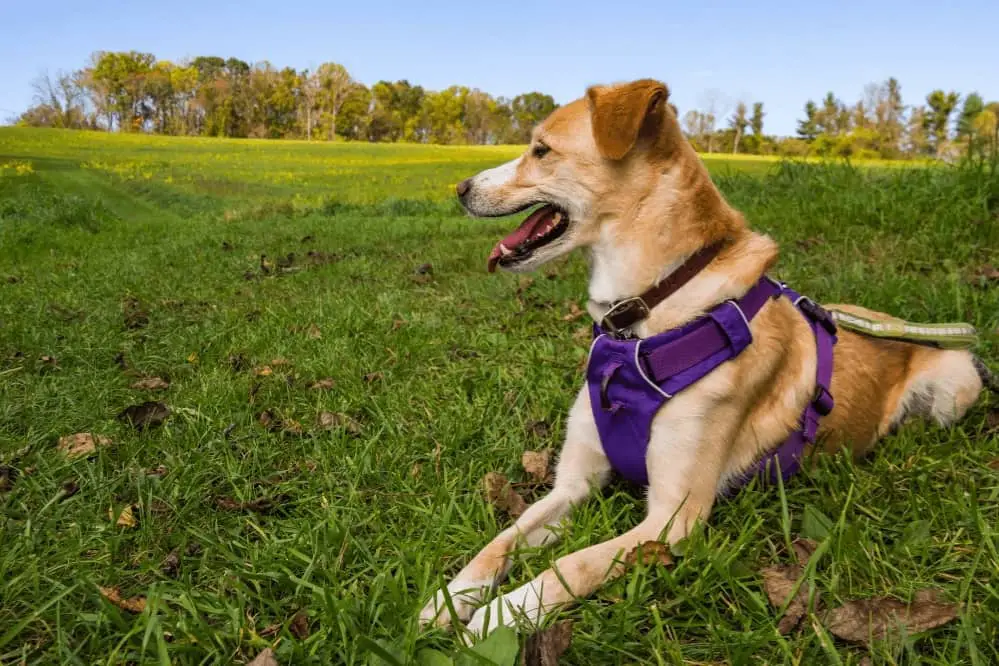If you are a dog owner, we assume that you love your dog, and as you would for any member of your family that you love, you want to make sure they are safe and well-cared for.
This often leads to a multitude of questions needing to be asked, and countless decisions to made relating to the welfare, and well-being of your dog.
While covering every single one of those would likely require us to write a whole volume of books, we are going to try to address just one of them, as asked in the title in this article.
The Question Being Asked
The question as to whether a harness can hurt a dog is a perfectly valid one. It tends to be asked by those who are considering switching their dog from a collar to a harness, new dog owners who have never owned a dog before, and those who are simply curious.
To answer the question with a simple ‘Yes’ or No’ would be easy, but it wouldn’t really help. Instead, we will answer by saying that harnesses CAN hurt dogs, BUT, and this is a particularly important, ‘but’ they shouldn’t, if being used in the correct way.
So, to ensure you understand how a harness might hurt a dog, you need to appreciate that it is not specifically the harness itself, but that the dog’s owner has done something wrong in terms of how the harness should be fitted or used.
Wrong Type Harness Being Used
The first point to consider is that there several different types of harness that you could buy for your dog. Each type of dog harness is worn differently, they are each used in different ways, and some are more suited to certain types and sizes of dogs than others.
We won’t go through each type in detail, but an example is comparing a head halter harness and a double clip harness. The double clip is worn around the body, so if your dog has sensitive skin in that area, for example, it may hurt them, whereas a head halter harness wouldn’t.
This is not to say a head halter harness is better than a dual clip harness, or that a dual-clip harness should never be used. Instead, it shows there are several factors to consider with regards to different harness types and any reasons why they might or might not hurt a dog.
Wrong Size Harness Being Used
Many of us have experienced trying to wear an item of clothing we haven’t worn for some time and realizing that it no longer fits us. Usually, it is because we have grown (normally outwards!), and as such the clothing is too tight on us.
Just as we would not wish to spend an uncomfortable day walking around in clothing that dug into us because it was too tight, then the same applies to your dog. Unfortunately, there are dog owners who simply buy what they thinks is ‘close enough’ in terms of harness size, to the detriment of their dog.
What can also happen is the dog owners buy a harness that can be adjusted, which is a good thing, but then they undo the benefit by adjusting the harness wrongly. The result is a harness that is too tight for their dog.
A harness that is too tight will feel uncomfortable at best for your dog, but worse, it can cause them pain as it digs into them as they breathe. Tight harnesses are also more likely to cause sore skin due to it rubbing against it as the dog walks around.
Harness Being Used Incorrectly By Owners
One issue that arises is the misconception from dog owners that a harness means they can pull or yank on their dog’s leash with greater force than a collar, and not cause their dog any harm. The simple fact is that this is totally untrue, and a dangerous belief to have.
Of course, harnesses can make training your dog to walk on a leash properly more effectively, and for many owners it allows them to have more control over their dogs. There’s nothing wrong with either of those two aims for the use of a harness.
However, where the real danger arises is when a dog owner uses the fact that the harness isn’t around the dog’s neck as a green light to use excessive force. Pulling a dog back severely and suddenly, regardless of which type of harness it is wearing carries the possibility of causing your dog an injury.
The specific injury may differ based on the size and breed of the dog, but they range from damaging muscles in their neck, chest, and abdomen, to bruising their skin.
In extreme cases causing injuries to a dog’s internal organs have occurred, simply because their owner thought they’d be immune to injury if they pulled hard on the harness.
Conclusion
Harnesses are safe for dogs, but only if the correct one is being worn, it is fitted correctly, and their owner realizes that the same care should be taken when controlling a dog wearing a harness as one with a collar.

